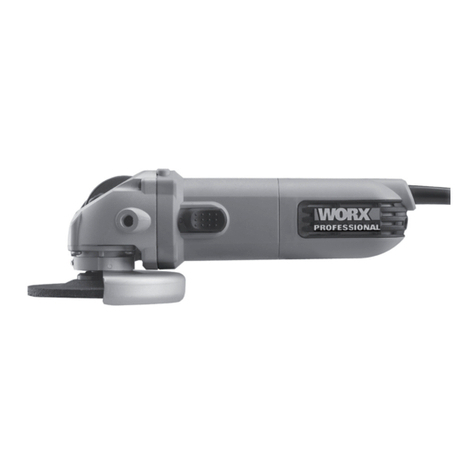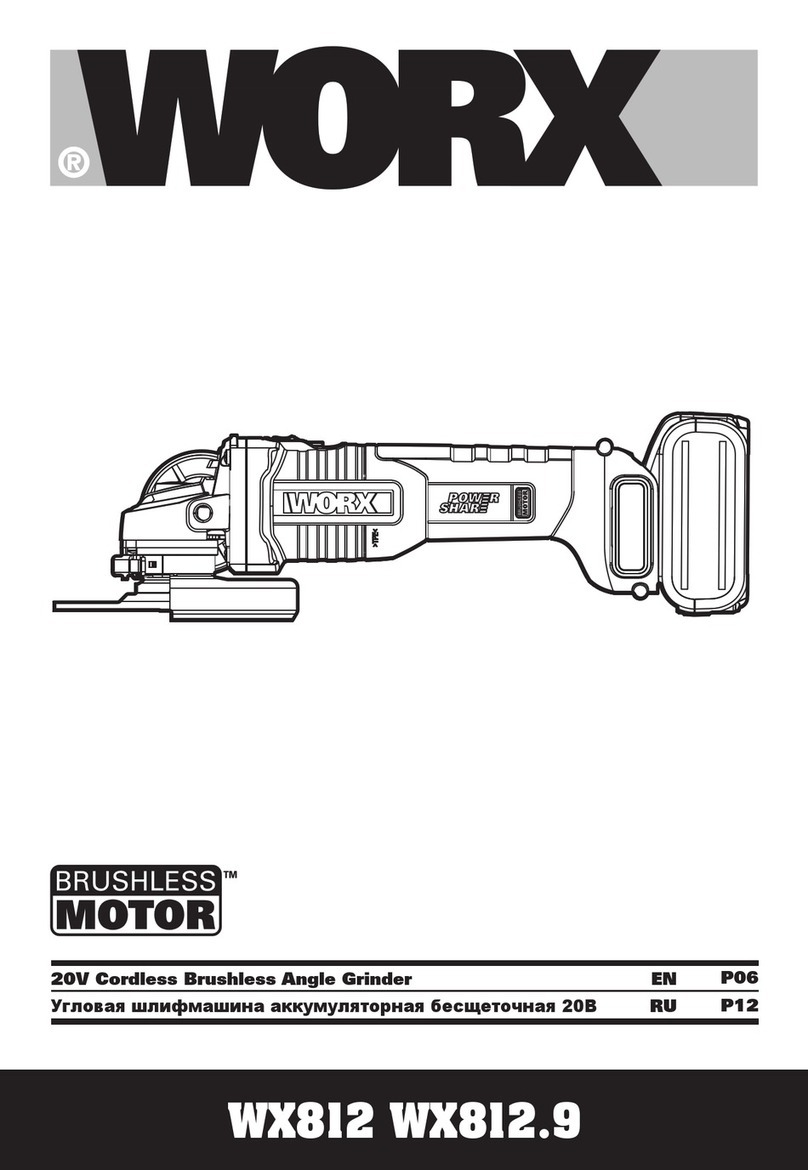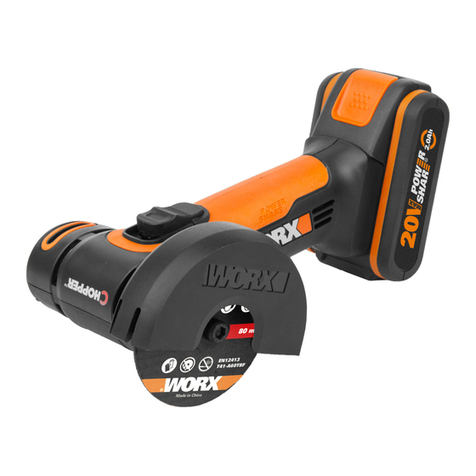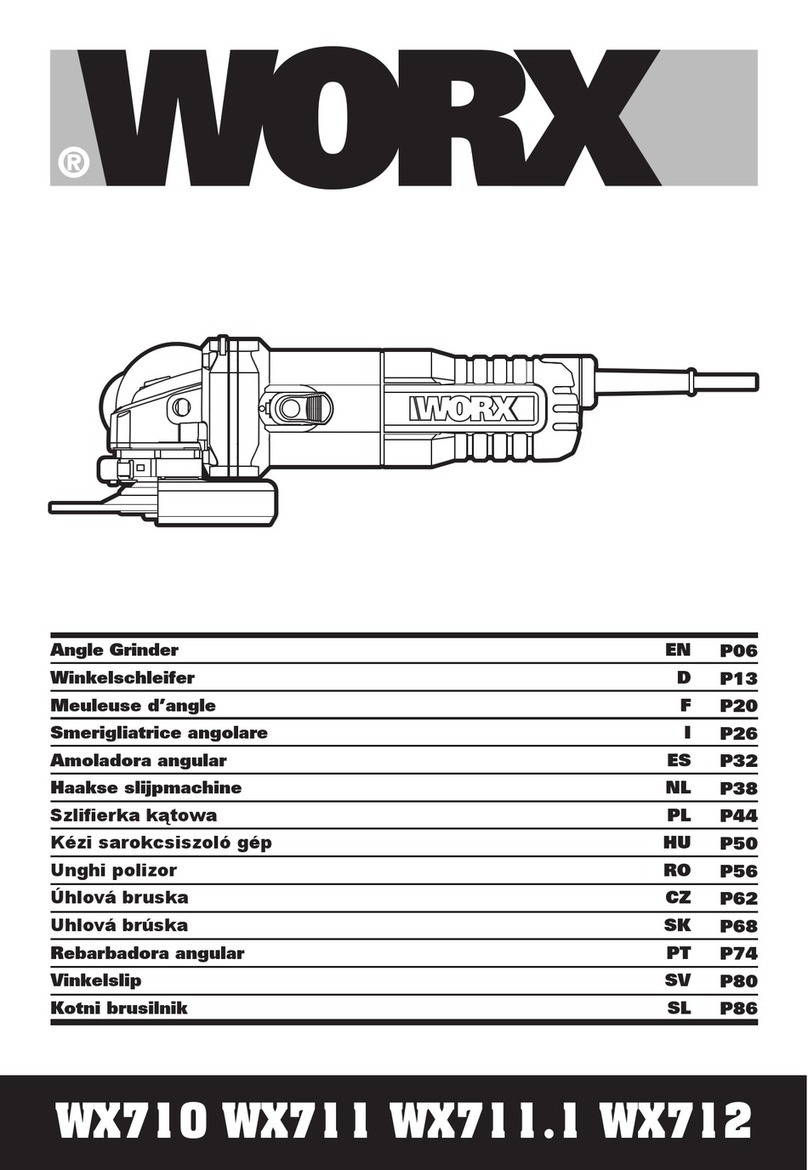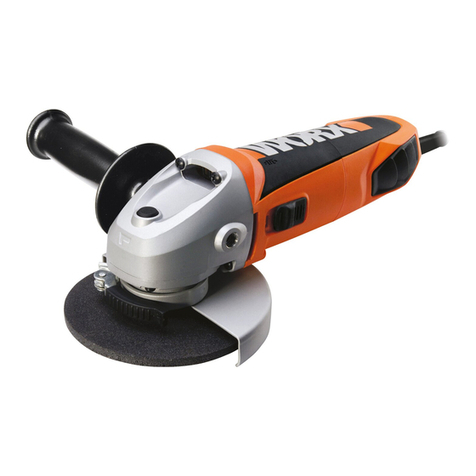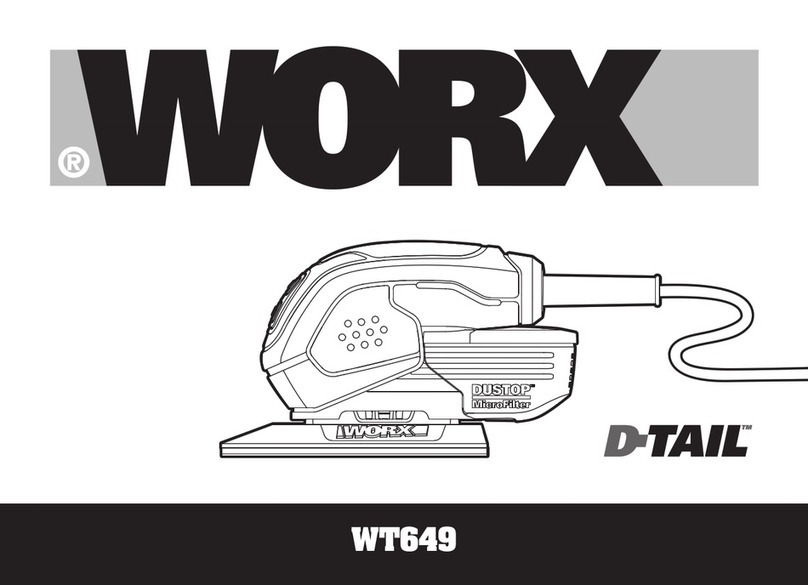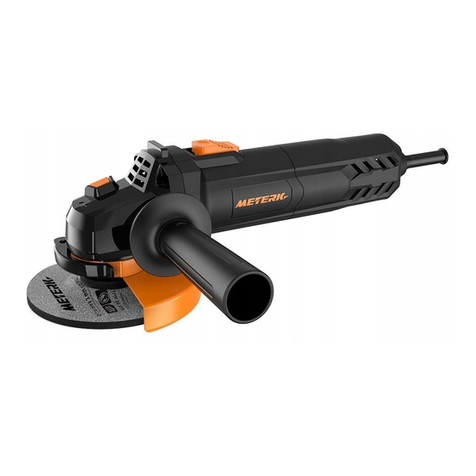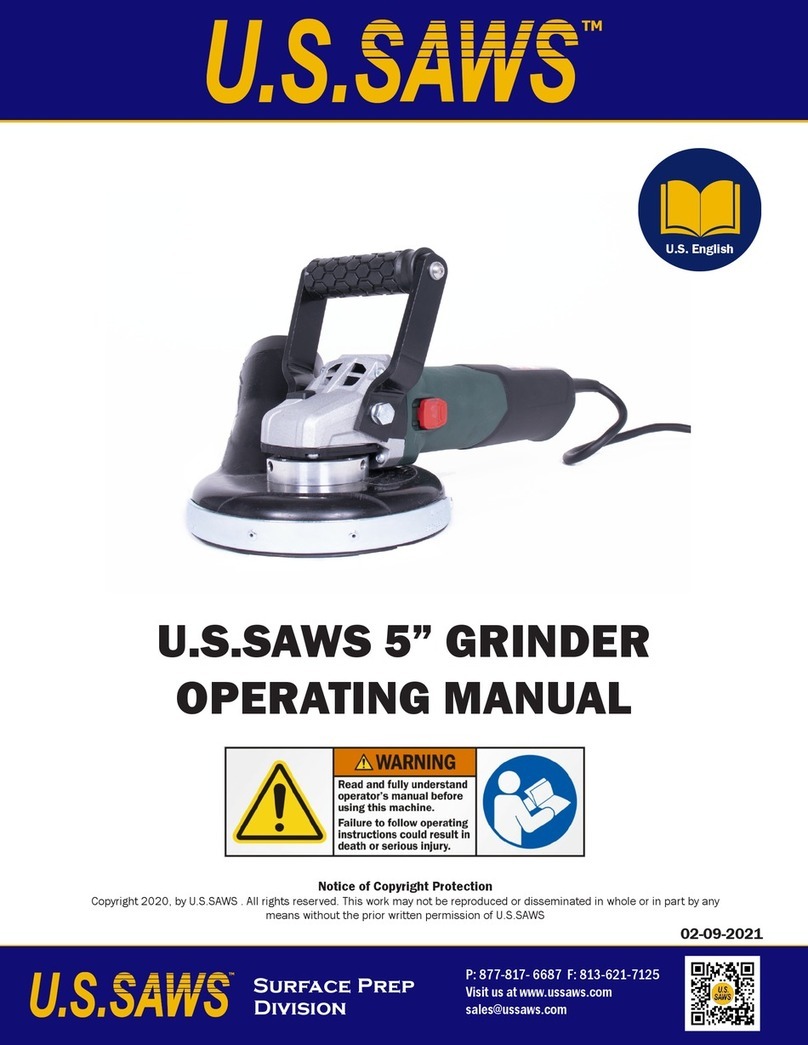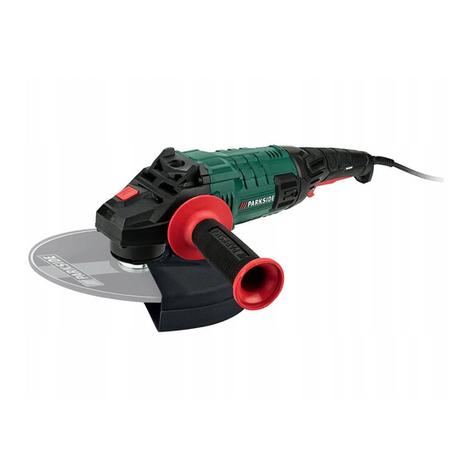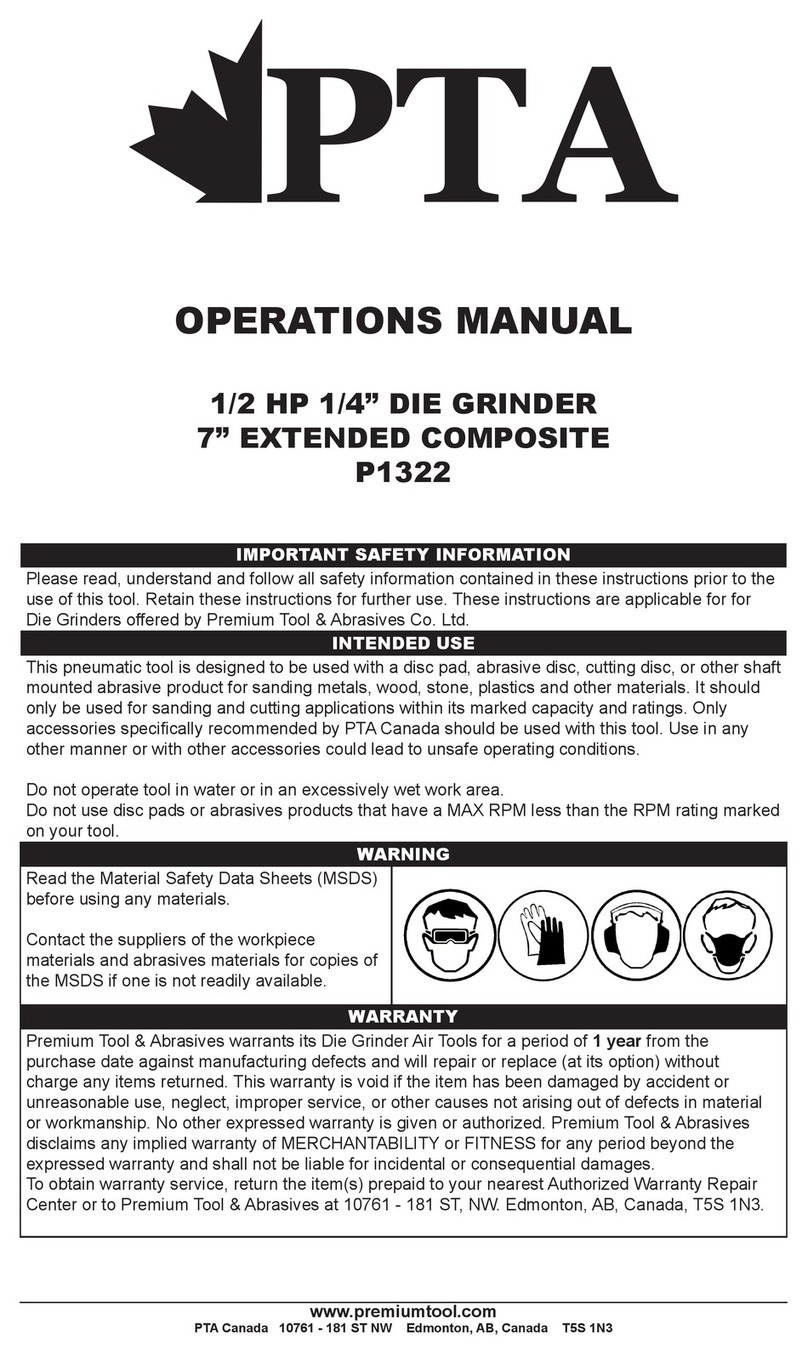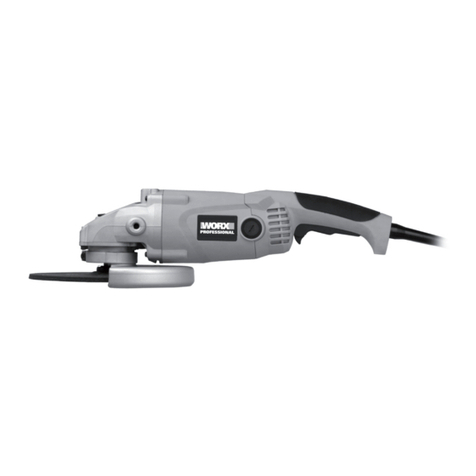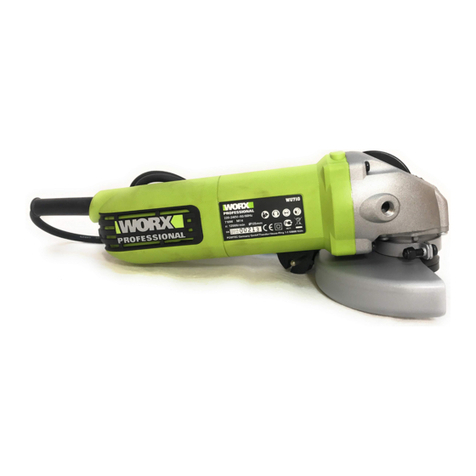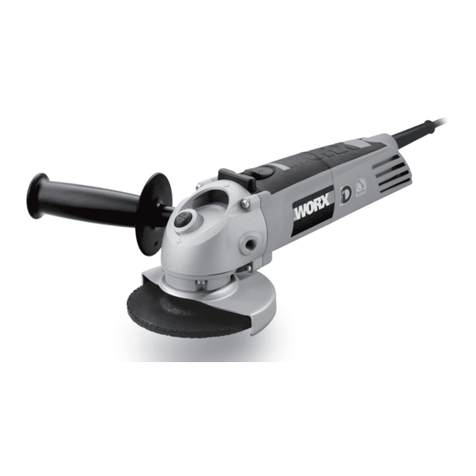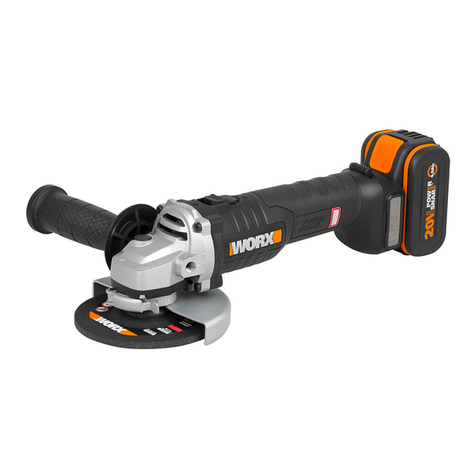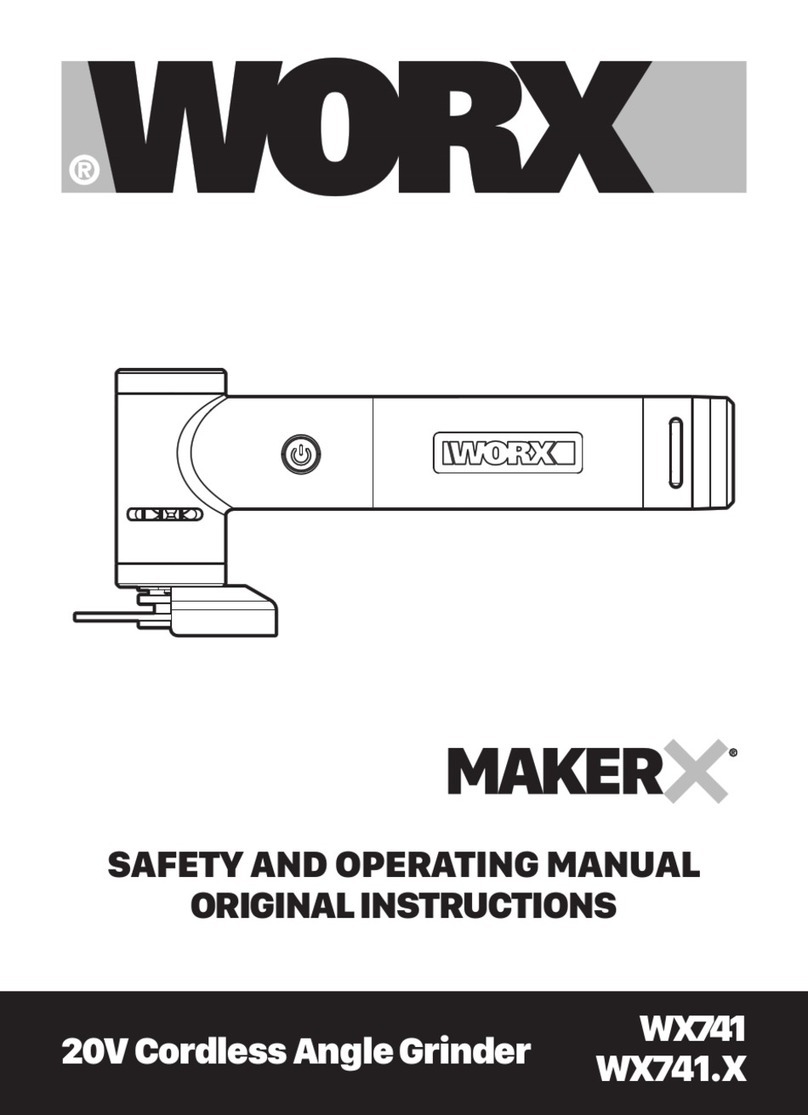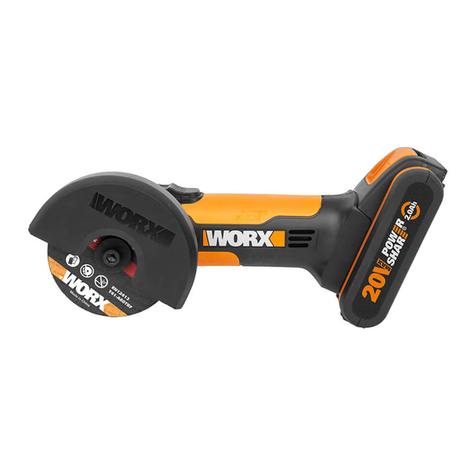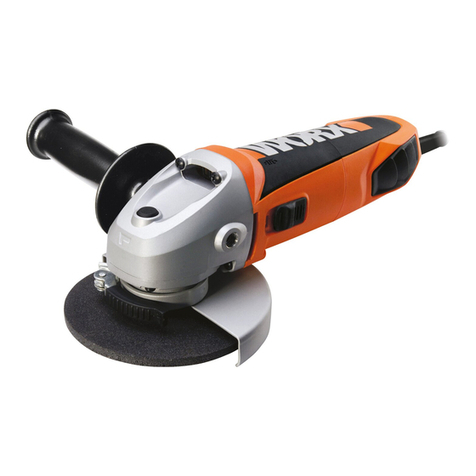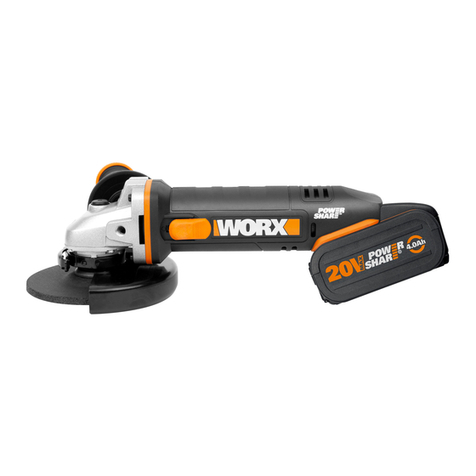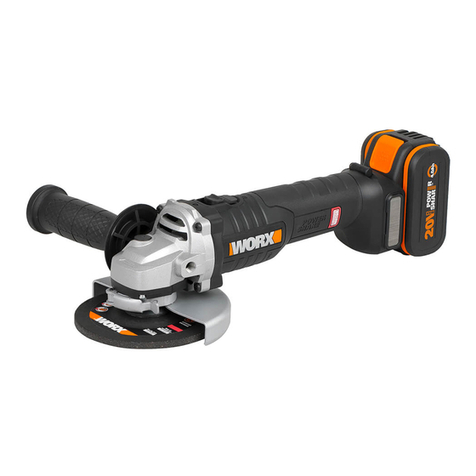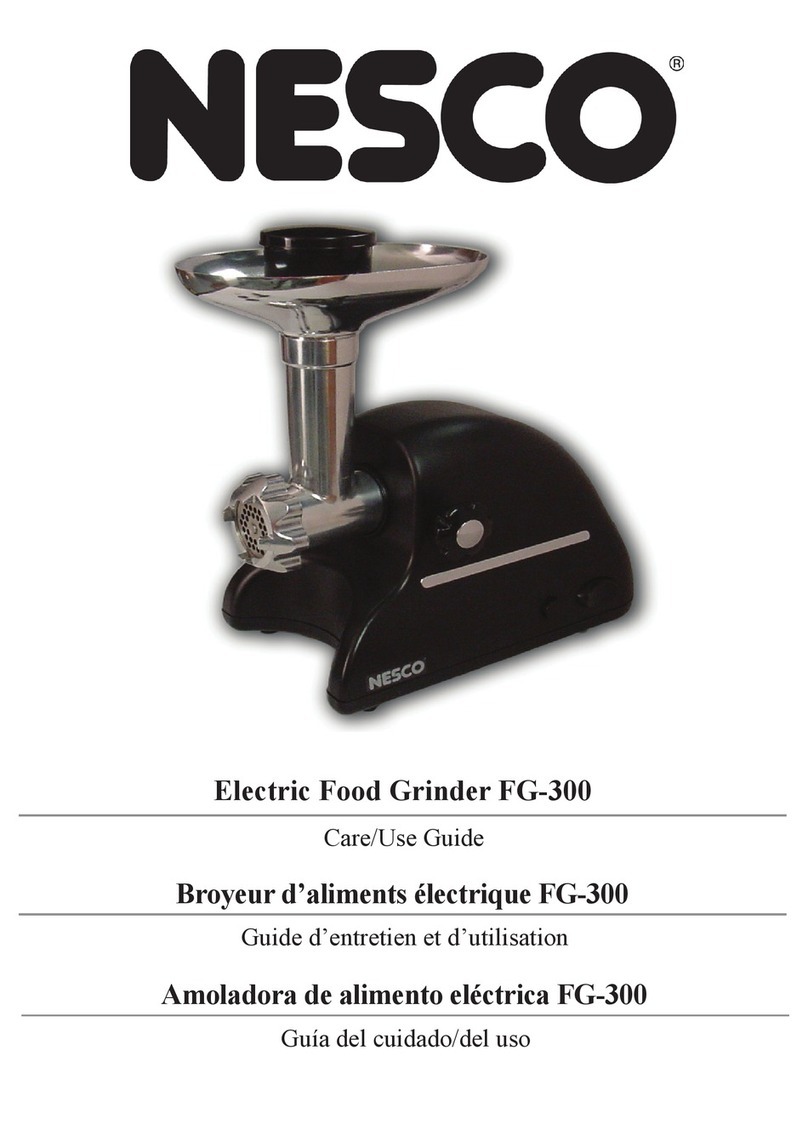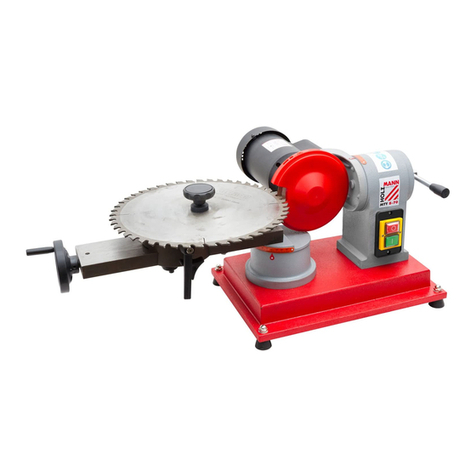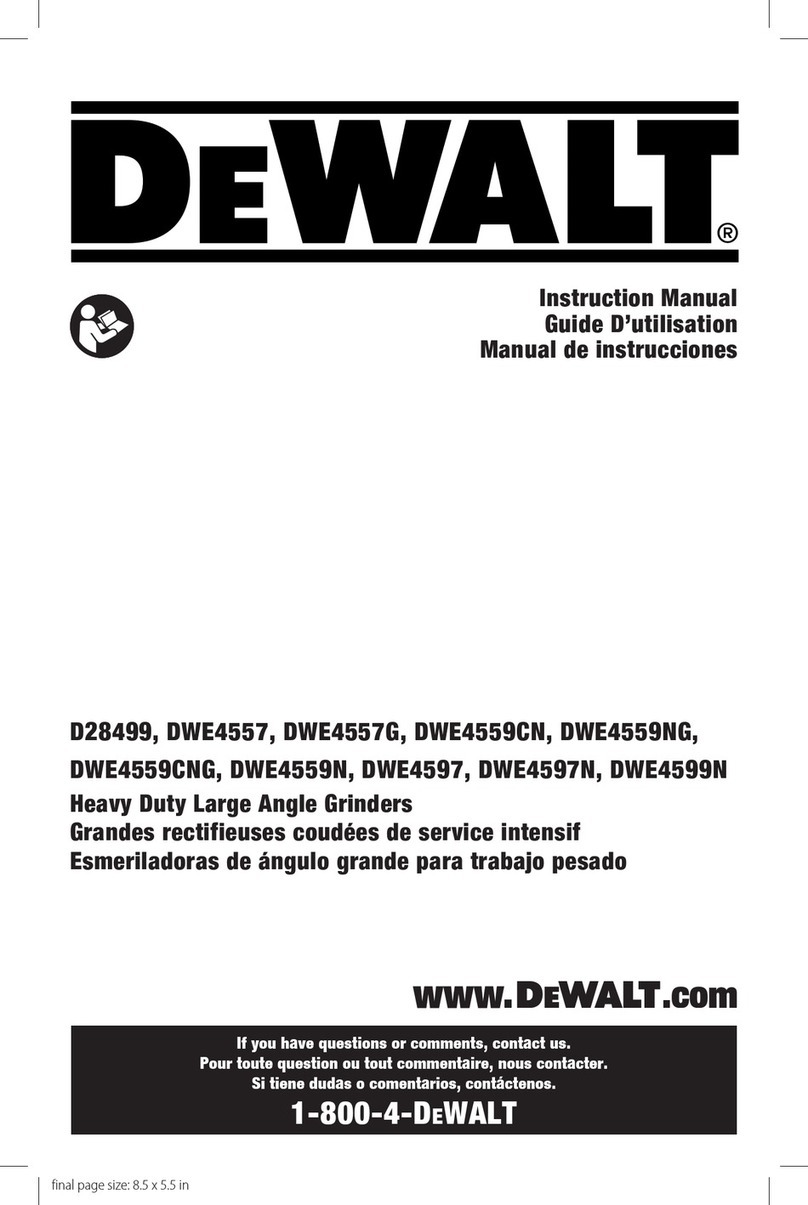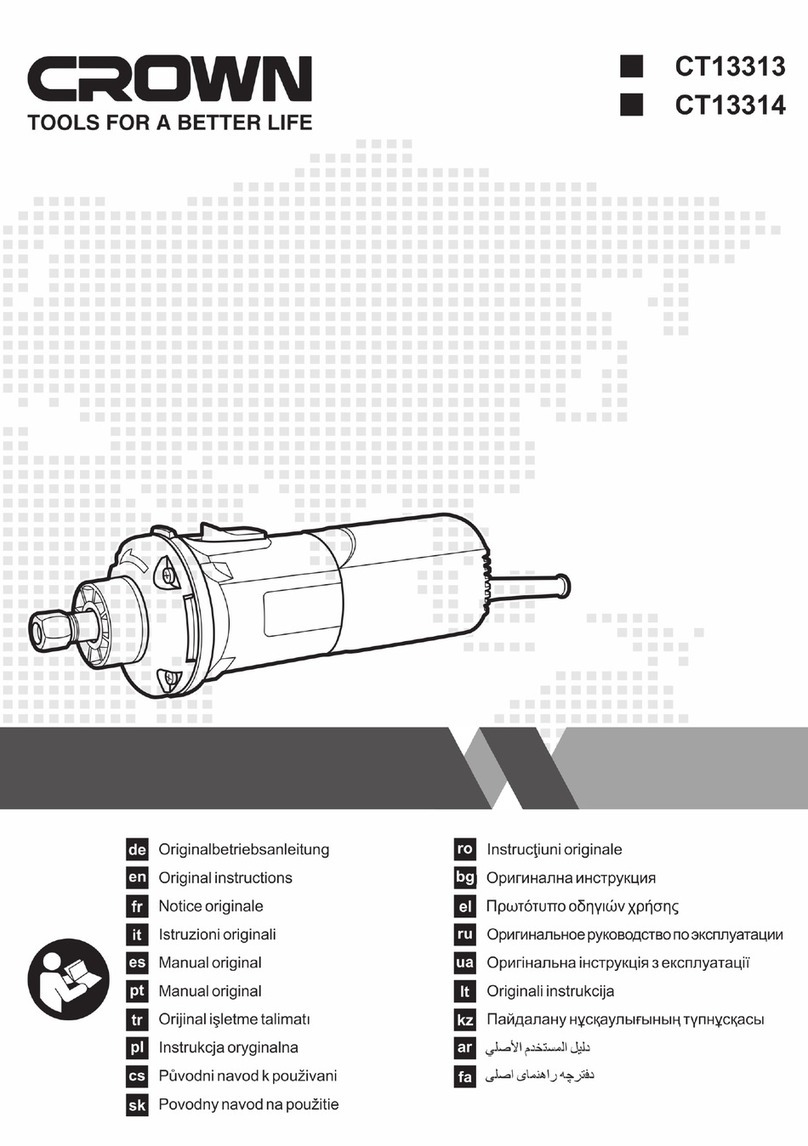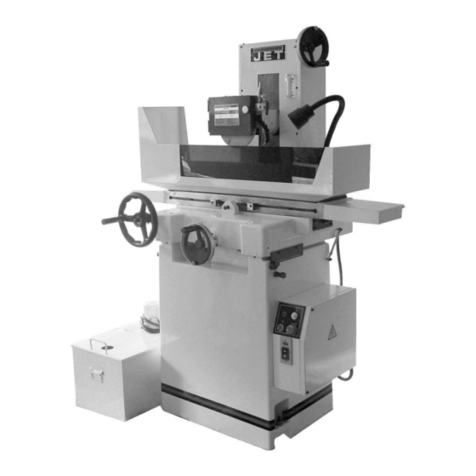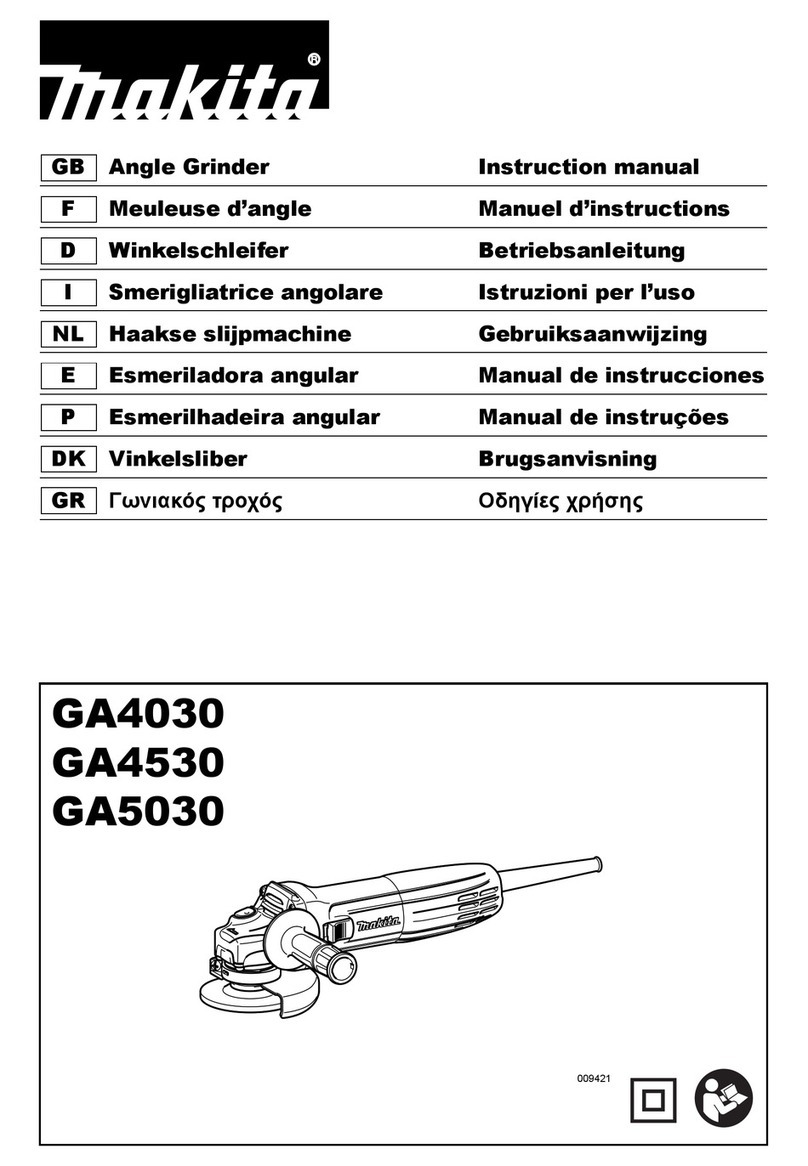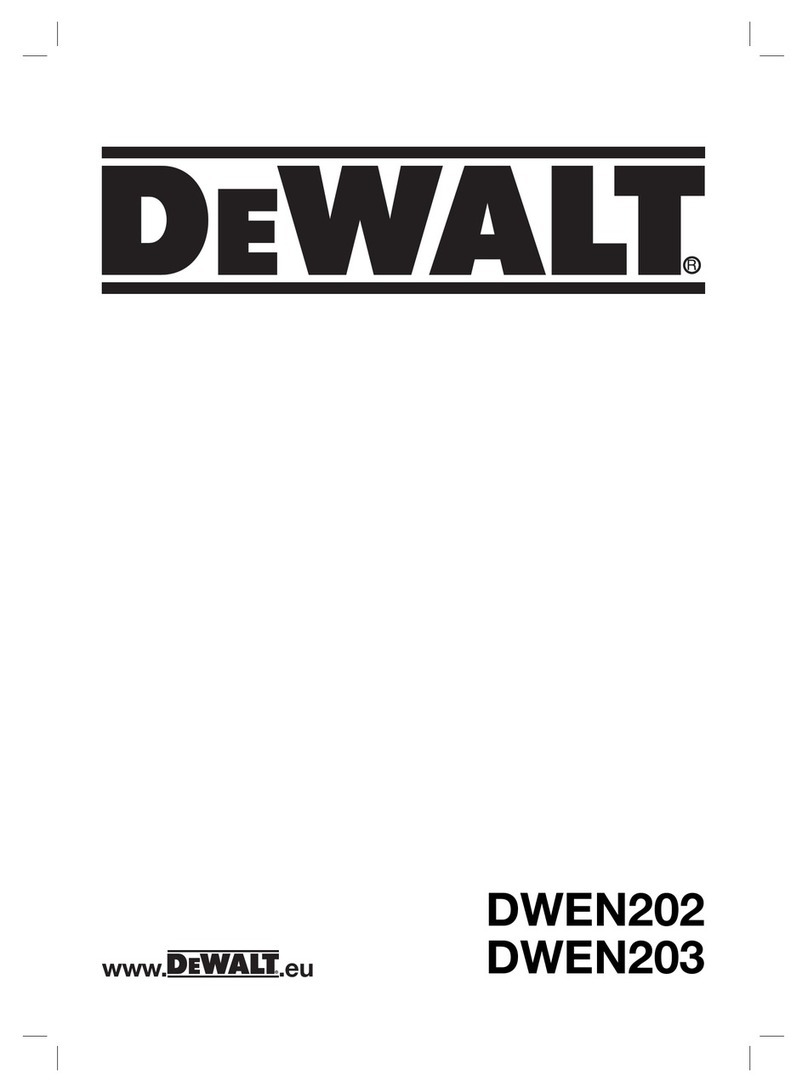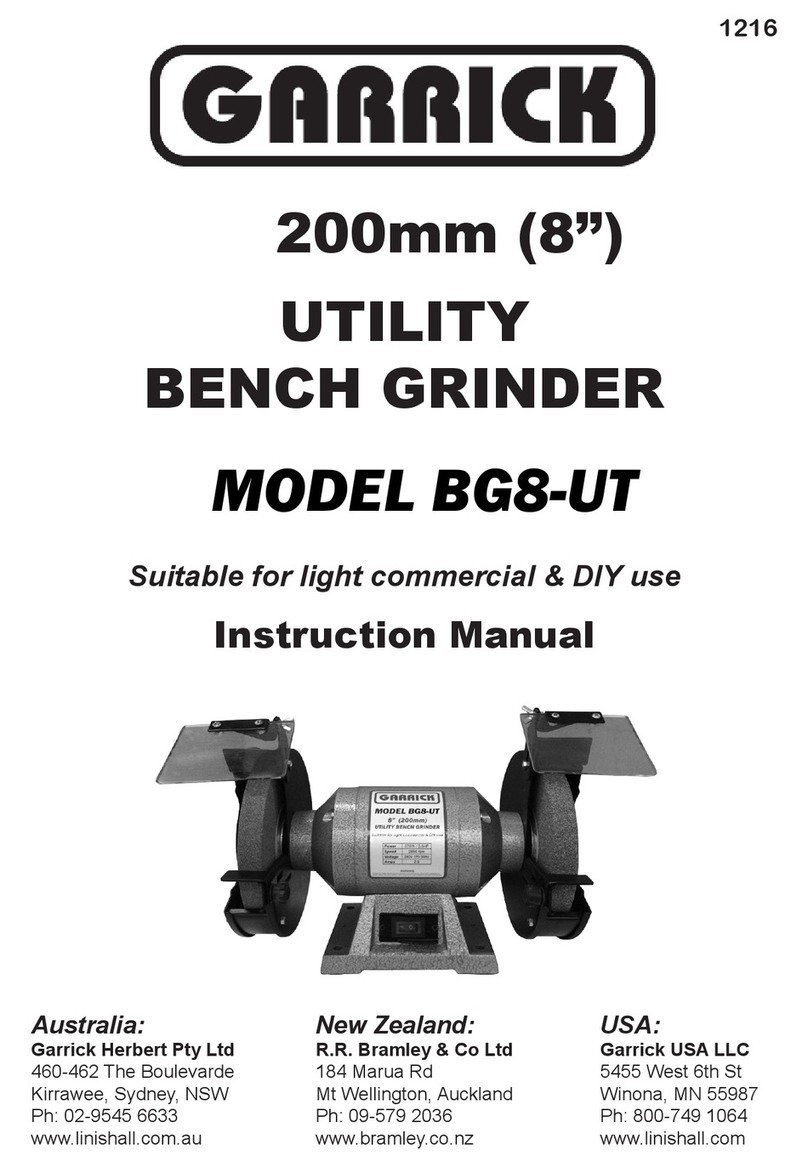
5
EN
recommendedby the toolmanufacturer.
Just because the accessory can be
attached to your power tool, it does not assure safe operation.
d) The rated speed of the accessory must be at least equal to the maximum speed
marked on the power tool.
Accessories running faster than their RATED SPEED can
break and fly apart.
e) The outside diameter and the thickness of your accessory must be within
the capacity rating of your power tool.
Incorrectly sized accessories cannot be
adequately controlled.
f) Threaded mountingof accessoriesmust matchthe GRINDERspindle thread.
For accessories mountedby FLANGES,the arbor holeof theaccessory must
fit the locating diameter of the FLANGE.
Accessories that do not match the
mounting hardware of the power tool will run out of balance, vibrate excessively and
may cause loss of control.
g) Donot usea damaged accessory. Before eachuse inspect theaccessory
such as abrasive wheels for chips and cracks, backing pad for cracks, tear
or excess wear. If power tool or accessory is dropped, inspect for damage
or installan undamaged accessory. Afterinspecting and installingan
accessory, position yourself and bystanders away from the plane of the
rotating accessory and run the power tool at maximum no-load speed for one
minute.
Damaged accessories will normally break apart during this test time.
h) Wearpersonalprotectiveequipment. Depending onapplication,use face
shield, safetygoggles or safety glasses.As appropriate,wear dustmask,
hearing protectors, gloves and workshopapron capable ofstoppingsmall
abrasiveor workpiece fragments.
The eye protection must be capable of
stopping flying debris generated by various operations. The dust mask or respirator
must be capable of filtrating particles generated by your operation. Prolonged
exposure to high intensity noise may cause hearing loss.
i) Keep bystanders a safe distance away from work area. Anyone entering the
workarea mustwear personal protective equipment.
Fragments of workpiece
or of a broken accessory may fly away and cause injury beyond immediate area of
operation.
j) Hold power toolbyinsulated grippingsurfaces only, whenperforming an
operationwhere thecutting accessorymay contact hiddenwiring.
Cutting
accessory contacting a “live” wire may make exposed metal parts of the power tool
“live” and could give the operator an electric shock.
k) Never lay the power tool down until the accessory has come to a complete
stop.
The spinning accessory may grab the surface and pull the power tool out of
your control.
l) Do not run the power tool while carrying it at your side.
Accidental contact with
the spinning accessory could snag your clothing, pulling the accessory into your
body.
m) Regularly clean the power tool’s air vents.
The motor’s fan will draw the dust
inside the housing and excessive accumulation of powdered metal may cause
electrical hazards.
n) Do not operate the power tool near flammable materials.
Sparks could ignite

